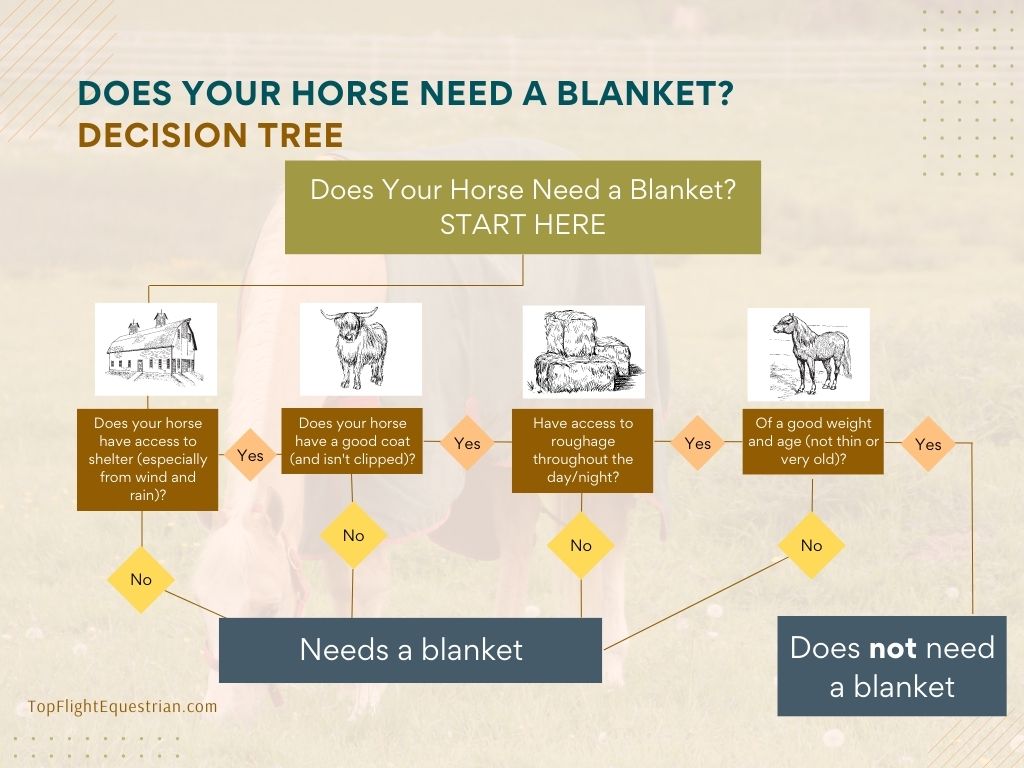Blanketing a horse can be an important aspect of horse care, especially during the colder months of the year. However, determining when it is appropriate to blanket a horse can be a bit tricky and depends on a variety of factors. Read on below or follow this handy chart.

Several important factors to consider when deciding to blanket your horse are:
Access to shelter for the temperature and weather conditions. If your horse doesn’t have access to shelter and the temperature is consistently below freezing, it may be necessary to blanket a horse to keep them warm. However, if the temperature is above freezing and the horse is in a sheltered area, blanket may not be necessary. Additionally, if it is raining or snowing, a horse may need to be blanketed to keep them dry and warm.
Something else to take into consideration when deciding whether or not to blanket a horse is the horse’s natural coat. Horses that have thick, woolly coats are typically better equipped to handle colder temperatures and may not need to be blanketed as frequently as horses with thinner coats. Additionally, horses that have been clipped or have had their coats trimmed may need to be blanketed more frequently to keep them warm.
Also, horses generate heat via digestion of hay and grass (roughage) and if provided a steady amount throughout the day or night during cold weather they have a better chance at staying warm.
Finally, it’s important to consider your horse’s age and health. Senior horses and horses that have health issues such as arthritis may need to be blanketed more frequently to keep them comfortable. Similarly, foals and young horses may need to be blanketed more frequently to keep them warm.
In general, it’s a good idea to monitor your horse’s behavior and physical condition, and adjust their blanketing as needed. Horses are individuals and what works for one horse might not work for another. If you notice that your horse is shivering or has a cold nose, they may be too cold and need to be blanketed. Similarly, if your horse is sweating or has a wet blanket, they may be too warm and may need to have their blanket removed.
In conclusion, blanket is a way to protect your horse from the cold and keep them comfortable during the colder months of the year. It’s important to consider a variety of factors when deciding when to blanket a horse, including their natural coat, age, health, temperature, and level of activity. By monitoring your horse’s behavior and physical condition, you can ensure that they are properly blanketed and comfortable throughout the winter.
Cheers!
B
